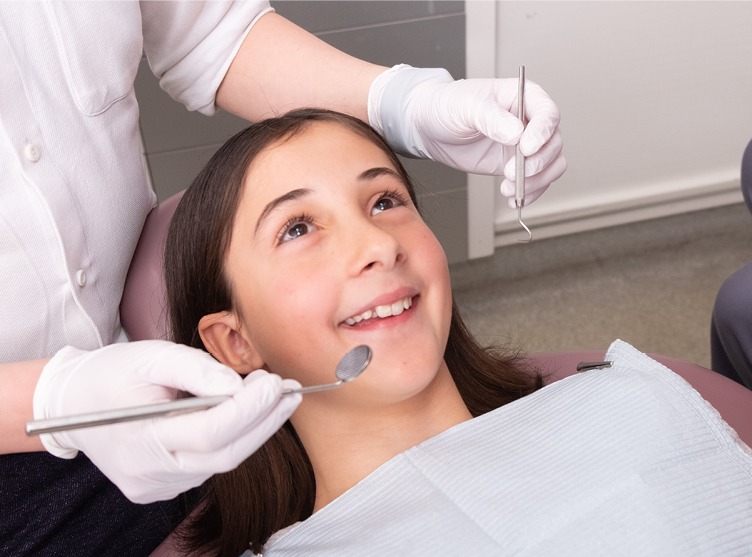What Does Legacy Orthodontics Mean?
What Does Legacy Orthodontics Mean?
Blog Article
The Basic Principles Of Legacy Orthodontics
Table of ContentsThe 9-Second Trick For Legacy OrthodonticsFascination About Legacy OrthodonticsThe Ultimate Guide To Legacy OrthodonticsLegacy Orthodontics Can Be Fun For Everyone8 Easy Facts About Legacy Orthodontics Described
At Advanced Orthodontics, we supply patients with a holistic therapy experience. On top of that, we provide flexible therapy schedules, versatile settlement options and a fun, pleasurable experience. leesburg orthodontist. Phone call ( 480) 357-4900 today for more details and routine a consultation.An orthodontist is a dentist educated to diagnose, stop, and treat teeth and jaw irregularities. They deal with existing conditions and are educated to recognize issues that may establish in the future. Orthodontists deal with individuals of every ages, from children to grownups. Individuals frequently connect a best smile with good health and wellness.
Malocclusion, or misaligned teeth, can cause oral concerns, consisting of dental cavity, gum condition, and hard or unpleasant eating. Not everyone is born with straight teeth. If you have a poor bite or large spaces in between your teeth, you may want to get in touch with a dentist focusing on orthodontic treatment.
Top Guidelines Of Legacy Orthodontics
( Image Credit Scores: DigitalVision/Getty Images) Orthodontists use taken care of and removable oral gadgets, like braces, retainers, and bands, to alter the setting of teeth in your mouth. Orthodontic treatment is for oral abnormalities, consisting of: Uneven teethBite issues, like an overbite or an underbiteCrowded teeth or teeth that are too far apartJaw misalignmentThe goal of orthodontic therapy is to boost your bite.
A healthy bite guarantees you can eat, eat, and talk effectively. While you could think of orthodontists as generally for children or teenagers that require dental braces, they can remedy dental problems at any kind of age. Orthodontists attend university, dental college, and orthodontic institution. After college graduation, they spend 2 or 3 years in an orthodontic residency program.
All orthodontists are dental professionals, but not all dental practitioners are orthodontists. Orthodontic residency programs provide extensive, concentrated instruction for oral professionals. They concentrate on 2 locations: Exactly how to effectively and safely move teeth Exactly how to appropriately assist growth in the teeth, jaw, and faceOnce an orthodontist has actually finished training, they have the choice to come to be board certified.
3 Simple Techniques For Legacy Orthodontics
Misalignment, or malocclusion, is one of the most typical reason individuals see an orthodontist. It is hereditary and is the outcome of size distinctions between the upper and reduced jaw or between the jaw and teeth. Malocclusion results in tooth overcrowding, a twisted jaw, or uneven bite patterns. Malocclusion is generally treated with: Your orthodontist affixes metal, ceramic, or plastic square bonds to your teeth.
Some individuals need a headgear to help relocate teeth into line with stress from outside the mouth. A retainer is a custom tool that keeps your teeth in area.
They can develop added area in the mouth without having to draw teeth. Orthodontists utilize cords, surgical screws, or plates to support your jaw bone.
You may require to see an orthodontist if you have: Crowding or not sufficient room for all of your teethOverbite, when your top teeth come by your base teethUnderbite, when your bottom teeth are also far forwardSpacing or concerns with gapsCrossbite, which is when your top teeth fit behind your bottom teeth when your mouth is closedOpen bite or a vertical gap in between your front base and upper teethMisplaced midline, when the center of your base and top teeth do not line up Remedying a dental malocclusion can: Make biting, chewing, and talking easierImprove the symmetry of our face and your general appearanceEase pain from temporomandibular joint conditionsSeparate your teeth and make them easier to cleanse, assisting prevent dental cavity or dental caries It's typically a dental expert who first notices misaligned teeth throughout a regular examination.
All about Legacy Orthodontics

During your first orthodontic appointment, you'll likely have: A dental examPhotos taken of your face and smileDental X-raysPanoramic (360 degree) X-rays of your face and headImpressions to develop molds of your teethThese examinations will certainly assist your orthodontist know how to proceed with your treatment. clear braces. An orthodontist is a dentist that's had training to treat your teeth and jaw
An orthodontist is focused on your bite, so something like a broken tooth would be managed by a dental professional. Orthodontists are focused on your bite, or the method your teeth fit together, and the straightness of your teeth.
Ever before wondered just how stars always seem to have completely straightened teeth? Orthodontists are dental experts who concentrate on correcting irregularities in the teeth and jaws.
Get This Report on Legacy Orthodontics

, orthodontists have a varied toolkit at their disposal. These tried-and-true braces make use of a system of brackets bound to the teeth and linked by cords.
Clear aligners, like Invisalign, are a prominent choice for clients looking for a much more very discreet treatment option. These removable trays are customized to progressively shift the teeth's setting. Headgear may be used along with dental braces or aligners to apply extra targeted pressures, especially for remedying jaw inconsistencies. In cases of narrow jaws, palatal anonymous expanders can be utilized to develop room for appropriate tooth positioning.
Report this page